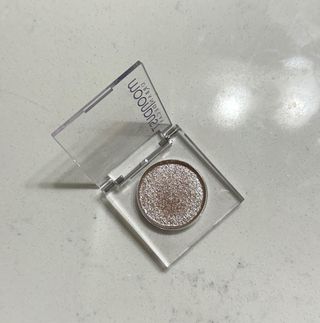
Data from the FDIC shows that the national average rate for savings accounts stands at 0.39% today, compared to 0.06% this time last year. However, many high-yield savings accounts and certificates of deposit (CDs) boast APYs upwards of 4% or even 5%, in some cases.
But despite offering significantly higher APYs, a recent study from Bankrate found that only one in five consumers with a savings account currently earns a competitive yield. Nearly a quarter earn less than 1%, while one in six reported earning no interest whatsoever.
Experts say there are a number of reasons why consumers aren’t focused on boosting their savings account balance or reaping the rewards of higher APYs.
One major culprit: inflation.
Consumers face several obstacles that make it more difficult to save
In a time when costs of everyday goods are on the rise, experts say that even covering the bare necessities has become increasingly difficult, which could lead consumers to prioritize more immediate bills and expenses, rather than saving for the future.
The most recent consumer price index (CPI) signaled a slowdown in rising prices, but not a complete reversal. The March CPI showed a 0.1% rise in the inflation rate, up 5.0% from the same period last year, according to the U.S. Bureau of Labor Statistics.
Some notable increases were seen in food prices, new-vehicle prices, shelter, and transportation services, to name a few.
Another major obstacle consumers are facing: steep debt balances.
“Many consumers may be unable to save currently due to tight budgets and high-interest-rate debt. As of Q4 2022, credit card balances increased by $61 billion to reach $986 billion, surpassing the pre-pandemic high of $927 billion,” says Kendall Meade, certified financial planner at SoFi. “While higher interest rates are great for high-yield savings accounts, it has also caused debts such as credit cards to get more expensive. High inflation has also caused tighter budgets, leaving many consumers struggling to save.”
Federal interest rate increases haven’t been the only factor to turn the banking world on its head. Major bank failures, the likes of which have not been seen since the 2007–2008 financial crisis, have given consumers new cause for concern, with many wondering how safe their money actually is and making them think twice about switching banks for the sake of a higher APY.
“Interest rates are higher now and FDIC still guarantees up to $250,000 per account. However, with one major bank failure recently, and a much weaker dollar than ever before, it should not be a surprise consumers are wary of making bank changes. This is especially true when brick-and-mortar banks aren’t everywhere like they used to be,” says Stuart Boxenbaum, certified financial planner and president of Statewide Financial Group in Jupiter, Fla.
3 ways to boost your savings
Switching to a savings account or CD with a higher APY is likely the easiest way to bolster your savings without making a ton of changes. And as long as you verify that your bank or credit union is a member of the Federal Deposit Insurance Corporation (FDIC) or the National Credit Union Administration (NCUA), your deposits will be insured up to $250,000 in the event of a bank or credit union failure.
If you’re not completely sold on switching to a different financial institution, there are a few other options for boosting your savings, including:
- Prioritizing debt repayment. The more debt you have, and the higher your interest rates are on that debt, the harder it is to prioritize saving. Make a plan to wipe out any large debt balances sooner rather than later. More federal interest rate hikes could be on the way, and it could trickle down in the form of higher credit card APRs or loan interest rates for you. Consider implementing a debt repayment strategy like the snowball or avalanche method to start attacking your debt.
- Factoring monthly savings into your budget. Make saving a priority. Take a look at your budget and be honest about whether or not your spending aligns with your savings goals. If you’re overspending in certain categories, see if you have the room to cut back and direct that money toward your savings account. “Take a moment to look through the charges on your cards. There may be subscriptions you no longer use or didn’t even realize you had; think free trials you forgot to cancel,” says Meade. “You can go ahead and cancel these to help lower your spending, giving you more money to save.”
- Consider a new savings strategy at your current bank. Scope out your bank’s product offerings to determine if they offer an alternative savings vehicle with a higher APY, perhaps in the form of a CD or money-market account. You could switch gears and consider putting all or a portion of your savings into a CD to take advantage of a higher APY or using a strategy like CD laddering to grow your savings without switching banks or tying up all of your money for an extended amount of time.
The takeaway
Savings account APYs are at an all-time high, and for consumers who have the money to store away, it’s worth their while to shop around for a new account. However, there are plenty of ways to boost your savings without moving to a brand-new bank or credit union or drastically changing your spending habits.

























